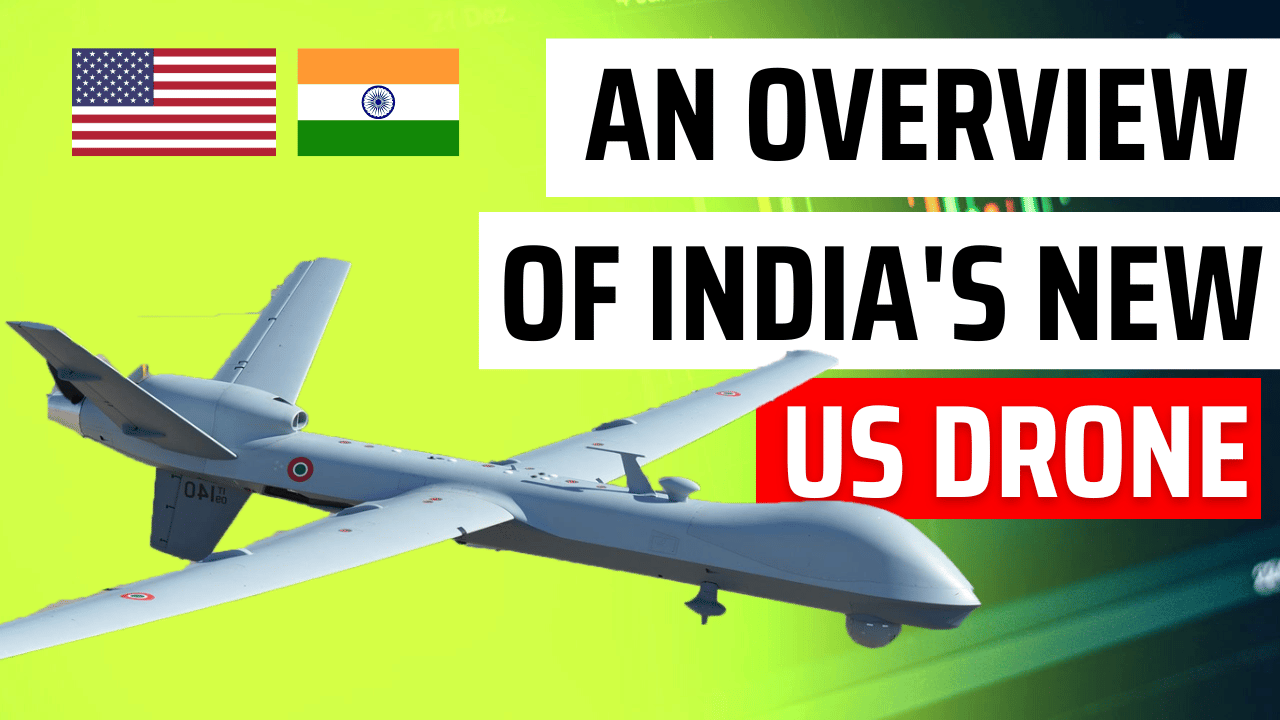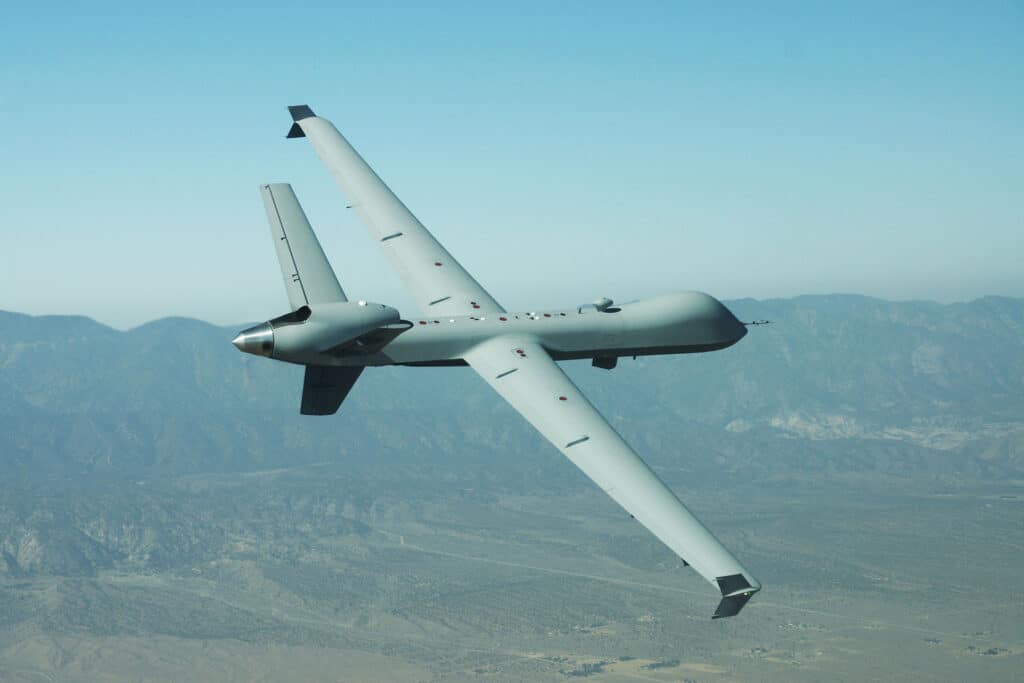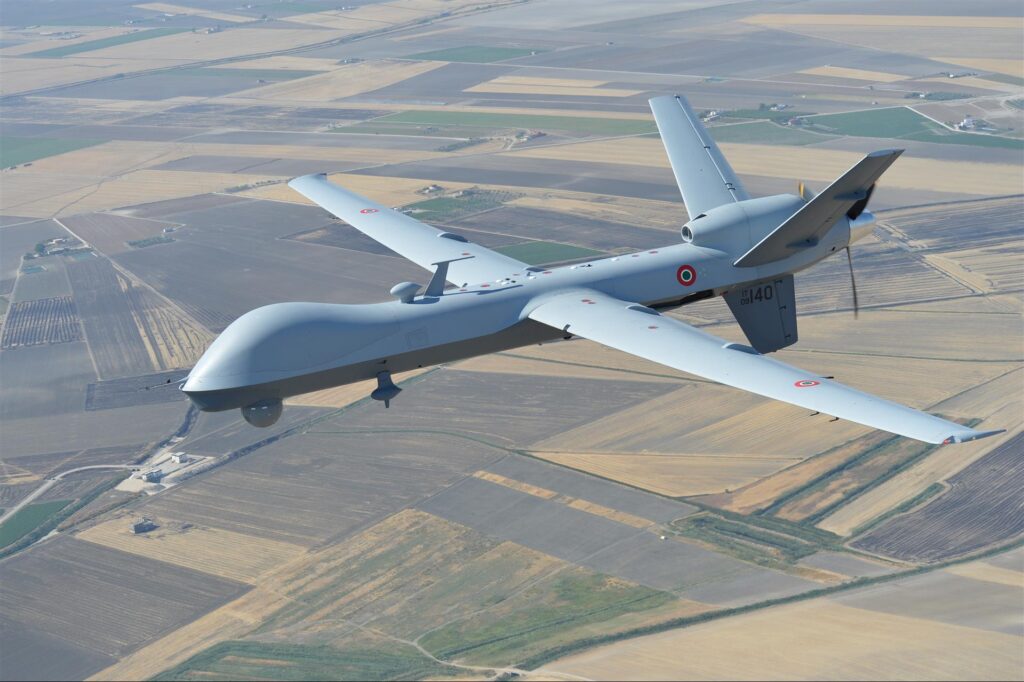Aerospace
India’s $3 Billion MQ-9 Reaper Drones Deal With US In Advanced Stage
India is reportedly buying 30 MQ-9B Predator armed drones that were produced in the US.

The UAV aircraft, which is one of the best strategic game changers, is the war’s next frontier. Currently, India is reportedly buying 30 MQ-9B Predator armed drones that were produced in the US.
There are six various variants of the aircraft depending on their operational capabilities, however, only a small number of UAVs created in the USA are offered for export to other nations. The MQ-9B is one of those UAVs.
This aircraft assists in locating the enemy’s coordinates and keeps an eye on the activity from a height of 50,000 feet. Making a choice and choosing a target for the weapons is one of the crucial elements.
The use of unmanned aerial vehicles (UAVs) in recent wars in Russia and Ukraine was crucial for remotely striking enemy targets. Since these aircraft are unmanned, they can go and hit their targets at extremely high altitudes.
Beyond any reasonable expectations, American technology can undoubtedly aid India against its nearby adversaries.
The anticipated $3 billion (about Rs 22,000 crore) purchase of 30 drones is intended to increase India’s total surveillance capabilities along the Line of Actual Control (LAC) with China and in the Indian Ocean.
Notably, the MQ-9B drone is a variation of the MQ-9 “Reaper,” which is said to have fired a modified Hellfire missile last month that took out al-Qaida commander Ayman al-Zawahiri in the center of Kabul.
Boeing received the most orders at the Farnborough airshows in 2022.(Opens in a new browser tab)
It has a turboprop engine that can run on several missions, and it can also be flown independently and remotely. This technology debuted in 2001.
10 things about Boeing 737 max aircraft.(Opens in a new browser tab)
The MQ-9 is available in two versions, one designed for surveillance and the other with seven external hardpoints for weapon storage and firing.
The U.S. and Royal Air Force gave it the moniker “Reaper,” although it is now often used to refer to any Predator B that is armed.
Top 6 Largest Passenger Aircraft in the World.(Opens in a new browser tab)
It has triple redundant flight control, which means that critical systems have been duplicated for usage in case of failure. One of the best strategies for lowering the likelihood of a significant issue affecting is redundancy. and have a more effective flight control system.
It is capable of working with both the Ku band satellite communication network and the C band line of sight data connection control. Its operational availability is 90%. It can also be self-deployed or transported by a cargo plane like a C130 transporter.
Featuring unmatched operational flexibility, MQ-9A has an endurance of over 27 hours, speeds of 240 KTAS, can operate up to 50,000 feet, and has a 3,850 pound (1746 kilogram) payload capacity that includes 3,000 pounds (1361 kilograms) of external stores. The aircraft carries 500% more payload and has nine times the horsepower. It provides a long-endurance, persistent surveillance/strike capability for the warfighter.
An extremely reliable aircraft, MQ-9A is equipped with a fault-tolerant flight control system and triple redundant avionics system architecture. It is engineered to meet and exceed manned aircraft reliability standards.
MQ-9A continues to improve and evolve, making it more relevant for its customers’ emerging needs. The MQ-9A Extended Range (ER) was designed with field-retrofittable capabilities such as wing-borne fuel pods and a new reinforced landing gear that extends the aircraft’s already impressive endurance from 27 hours to 34 hours, while further increasing its operational flexibility. To date, the MQ-9A has been acquired by the U.S. Air Force, the U.S. Department of Homeland Security, NASA, the Royal Air Force, the Italian Air Force, the French Air Force, and the Spanish Air Force.
- CharacteristicsWing Span:66 ft (20m)
- Length:36 ft (11m)
- Powerplant: Honeywell TPE331-10
- Max Gross Takeoff Weight:10,500 lb (4763 kg)
- Fuel Capacity:3,900 lb (1769 kg)
- Payload Capacity:850 lb int. (386 kg)3,000 lb ext. (1361 kg)
- Payloads: MTS-B EO/IR, Lynx Multi-mode Radar, Multi-mode maritime radar, Automated Identification System (AIS), SIGINT/ESM system, Communications relay
- Power:11.0 kW/45.0 kVA (Block 5)
(redundant) Performance - Max Altitude:50,000 ft (15240m)
- Max Endurance:27 hr
- Max Air Speed:240 KTAS
| Features |
|---|
|

Aerospace
Boeing Transfers Rocket Stage to NASA, Paving Way for Human Moon Mission

Boeing has achieved a significant milestone by providing NASA with the second core stage of the Space Launch System (SLS) rocket.
This crucial component, crafted at NASA’s Michoud Assembly Facility (MAF), is set to propel the Artemis II crew into lunar orbit, marking humanity’s return to deep space after a 50-year hiatus.
The monumental Boeing-built rocket stage, the largest element of the Artemis II mission, will embark on a journey aboard the Pegasus barge, traveling 900 miles to NASA’s Kennedy Space Center.
Comparison of two legendary aircraft B777x vs B747 aircraft:Click here
Upon arrival, it will be meticulously integrated with other essential Artemis II components, including the upper stage, solid rocket boosters, and NASA’s Orion spacecraft within the iconic Vehicle Assembly Building. This intricate integration process is a vital step toward the eagerly anticipated Artemis II launch, slated for 2025.
“Boeing-built products helped land humankind on the moon in 1969, and we’re proud to continue that legacy through the Artemis generation,” remarked Dave Dutcher, vice president and program manager for Boeing’s SLS program. “Together, with NASA and our industry partners and suppliers, we are building the world’s most capable rocket and paving the way to deep space through America’s rocket factory in New Orleans.”
NASA, Lockheed Martin Reveal X-59 Quiet Supersonic Aircraft:Click here
The delivery of Core Stage 2 marks a significant achievement in the evolution of the SLS rocket. Towering over 200 feet and powered by four RS-25 engines, this core stage, coupled with two solid-fueled booster rockets, will generate a staggering 8.8 million pounds of thrust. This immense power is crucial to launching Artemis II and future missions into the vast expanse of space.
The SLS rocket stands unparalleled in its capability to transport both crew and substantial cargo to the moon and beyond in a single launch. Its extraordinary capacity will facilitate the delivery of human-rated spacecraft, habitats, and scientific missions to destinations including the moon and Mars, ushering in a new era of space exploration.
-

 Travel1 week ago
Travel1 week agoAir India to Expand US Operations with Three New Routes After a Decade
-

 Travel2 weeks ago
Travel2 weeks agoWhy We Should Avoid These Stamps in a Passport
-

 Airlines1 month ago
Airlines1 month agoInvestigations Reveal Fake Chinese Titanium in Boeing and Airbus Jets
-

 Tech4 weeks ago
Tech4 weeks agoChina’s CATL Plans 1,800-Mile Electric Plane Launch by 2027
-

 Airport3 days ago
Airport3 days agoTop 10 Largest Airports in the World by Size
-

 Aerospace4 weeks ago
Aerospace4 weeks agoChina’s Fighter Jets Turn Wings into Autonomous Drones
-

 Airlines4 days ago
Airlines4 days agoAir India Rolls Out A350s for Delhi-New York JFK and Newark Routes
-

 Defence3 weeks ago
Defence3 weeks agoBoeing Enhances Chinook with New Engines and Block II Upgrades at $96 Million










